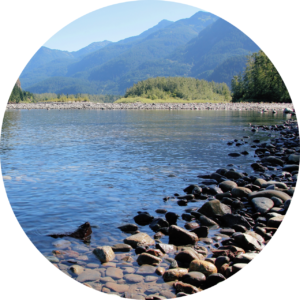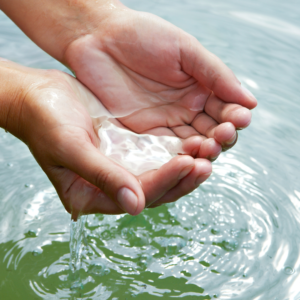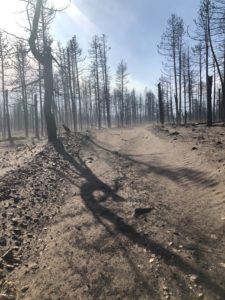Bohemian Foundation to match first $250,000 for NoCoFires Fund
Everyone loves a comeback story.
Northern Colorado’s two primary watersheds – the Poudre and the Big Thompson – each face a long, hard recovery from the damage caused by our recent catastrophic wildfires.
And with the support of the Bohemian Foundation, the NoCoFires Fund is working to get our vital rivers and streams back to sustaining wildlife, recreation, and agriculture, as well as supplying high-quality drinking water for 1,000,000 people.

Here’s how it will work:
- Bohemian Foundation has pledged to match the first $250,000 in donations made to the NoCoFires Fund.
- Using that initial funding, the Community Foundation will leverage additional grant dollars from private, state, and federal sources.
- The long-term goal for the NoCoFires Fund is to raise $1 million for continuing watershed restoration needs.
“The investment we can make together in NoCoFires Fund will have positive impacts for decades,” said Bohemian Foundation Executive Director Cheryl Zimlich. “This Community Foundation fund supports erosion control efforts that mitigate further degradation, as well as long-term restoration of vegetation and water quality. With this matching grant, we are standing with many generous Coloradans and the Community Foundation to help our region begin to heal.”
Early estimates show that mitigation in the Poudre River watershed alone will cost around $50 million. Cameron Peak and East Troublesome Fire, the two largest wildfires in Colorado history, together burned over 400,000 acres that impact both Poudre and Big Thompson watersheds and communities downstream.
“We’re gratified that Bohemian Foundation has signed on to match the first $250,000 raised, which we hope to further leverage into additional grant dollars; our goal is to raise $1 million,” said Mark Driscoll, chair of Community Foundation Board of Trustees.
One Community Foundation partner is the Colorado Department of Natural Resources, which is headed by Executive Director Dan Gibbs.
 In October, Gibbs was one of the 1,400 firefighters called to fight the Cameron Peak wildfire. “This was perhaps my most intense deployment in over 13 years,” Gibbs said. “The Cameron Peak wildfire burned some of our most pristine watersheds that will require both emergency protection and long-term restoration to protect our water supplies, mitigate flood threats, and preserve the outdoor economic engines Coloradoans depend on. I’m grateful for the Community Foundation’s support. These dollars fill a crucial need to support communities that are already experiencing economic stress by funding emergency protection efforts and assisting with local cost-shares that can leverage additional funding through recovery grants.”
In October, Gibbs was one of the 1,400 firefighters called to fight the Cameron Peak wildfire. “This was perhaps my most intense deployment in over 13 years,” Gibbs said. “The Cameron Peak wildfire burned some of our most pristine watersheds that will require both emergency protection and long-term restoration to protect our water supplies, mitigate flood threats, and preserve the outdoor economic engines Coloradoans depend on. I’m grateful for the Community Foundation’s support. These dollars fill a crucial need to support communities that are already experiencing economic stress by funding emergency protection efforts and assisting with local cost-shares that can leverage additional funding through recovery grants.”
Another organization deeply affected by the damage to the watershed is the city of Greeley, which draws a large percentage of its water from the Poudre. Sean Chambers, director of water and sewer at the city of Greeley, hailed the attention paid to the restoration effort.
“We are working with Larimer County to develop a watershed-scale burn assessment, and with the U.S. Forest Service on plans and permits for post-fire mitigation to protect water quality that will also protect infrastructure and habitat,” Chambers said. “A small amount of mitigation work is under way, but much work lies ahead. Stakeholders need to align with resources to prevent fire debris and sediment loading in Northern Colorado streams, rivers, wetlands, and water supply reservoirs.”
It’s time to focus on mitigation, address the critical needs, and begin long-term recovery work. The Community Foundation has the track record, leadership, and relationships to positively impact Northern Colorado.
Find details about how you can help the rivers make a comeback at nocofoundation.org/fires/.
Cameron Peak Fire impacts
- 1,000+ river miles

- 124+ trail miles
- 40,000+ acres of designated Wilderness Areas
- 32 miles of Wild and Scenic River corridor
- Three watersheds
- Five reservoirs that store and deliver water to the Front Range for agriculture and drinking water
- 16 mountain communities and neighborhoods in the burn area or immediately adjacent to it
- 185,000 irrigated acres rely on the Poudre River
Data source: Coalition for the Poudre River Watershed






